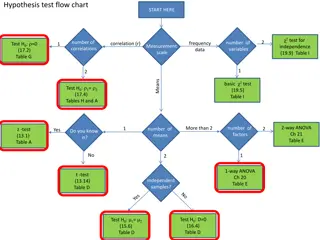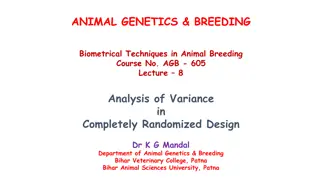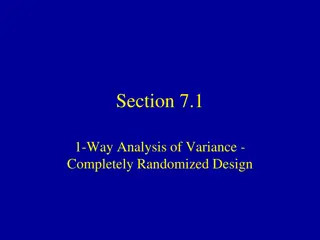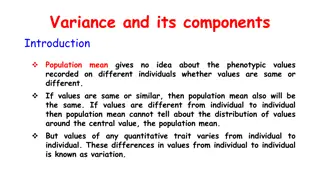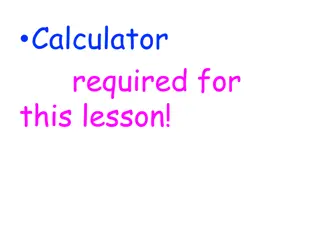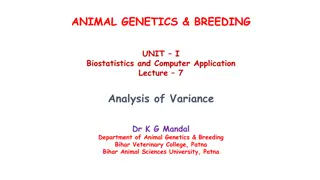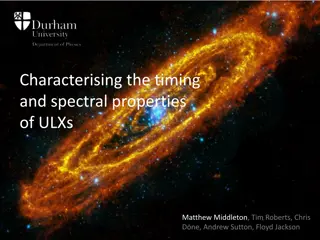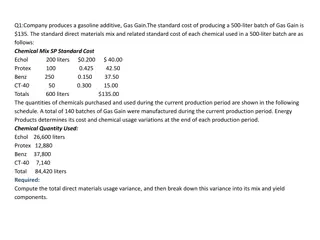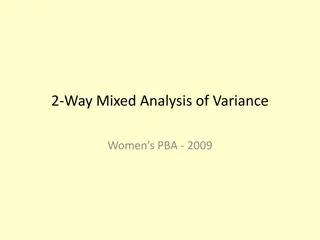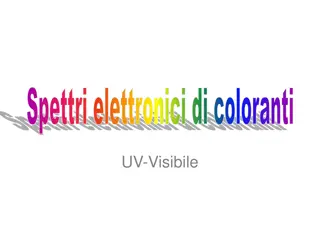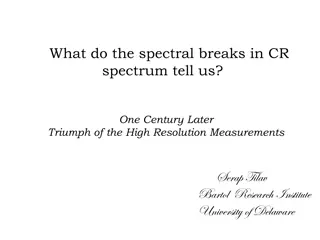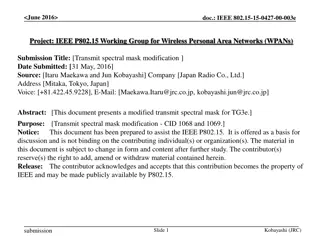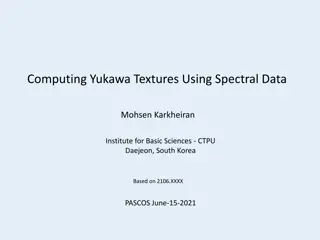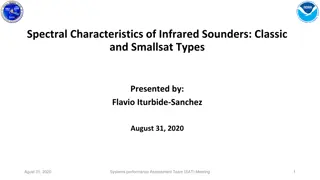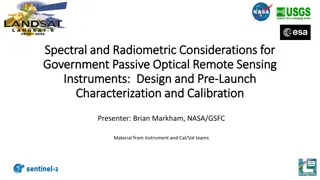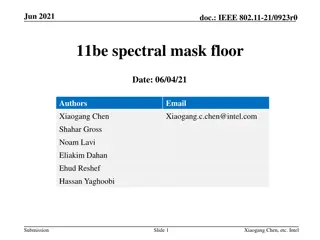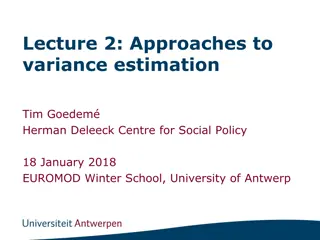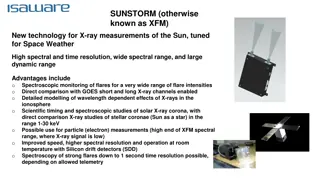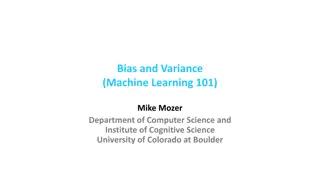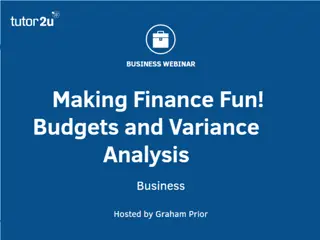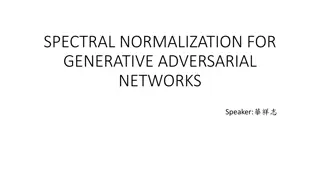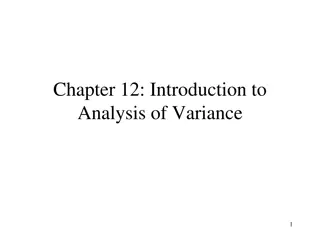Analysis of Variance (ANOVA) for Testing Multiple Group Differences
Testing for differences among three or more groups can be effectively done using Analysis of Variance (ANOVA). By focusing on variance between means, ANOVA allows for comparison of multiple groups while avoiding issues of dependence and multiple comparisons. Sir Ronald Fisher's ANOVA method provides
7 views • 28 slides
Biometrical Techniques in Animal Breeding: Analysis of Variance in Completely Randomized Design
Biometrical techniques in animal breeding involve the use of analysis of variance (ANOVA) to partition total variance into different components attributable to various factors. In completely randomized designs, experimental units are randomly assigned to treatments, ensuring homogeneity. The total n
6 views • 34 slides
Rate Optimization in Wideband RIS-assisted Wireless Systems
This research focuses on rate optimization in wideband RIS-assisted wireless systems, specifically investigating MIMO RIS-assisted systems in sub-6 GHz mmWave settings. Pathloss and blockage modeling, along with LOS vs. spectral efficiency and RIS-UE distance vs. spectral efficiency analyses, are ke
3 views • 4 slides
Analysis of Variance in Completely Randomized Design
This content covers the analysis of variance in a completely randomized design, focusing on comparing more than two groups with numeric responses. It explains the statistical methods used to compare groups in controlled experiments and observational studies. The content includes information on 1-way
2 views • 48 slides
Variance and Its Components in Population Studies
Variance and its components play a crucial role in analyzing the distribution of quantitative traits in populations. By measuring the degree of variation through statistical methods like Measures of Dispersion, researchers can gain insights into the scatterness of values around the mean. Partitionin
2 views • 22 slides
Evaluation of IEEE 802.11ax for IMT-2020 eMBB Dense Urban Test Environment
This document discusses the evaluation of IEEE 802.11ax technology in the context of the IMT-2020 Enhanced Mobile Broadband (eMBB) Dense Urban test environment. It analyzes the performance of 802.11ax in meeting the key PHY/MAC metrics required for eMBB Dense Urban scenarios, such as Peak Spectral E
4 views • 13 slides
Measures of Variability: Variance and Standard Deviation
This lesson covers the concepts of variance and standard deviation as measures of variability in a data set. It explains how deviations from the mean are used to calculate variance, and how standard deviation, as the square root of variance, measures the average distance from the mean. Degree of fre
7 views • 26 slides
Analysis of Variance (ANOVA) in Animal Genetics & Breeding
ANOVA is a statistical method that partitions the total variance into components attributable to different factors in animal genetics and breeding. This lecture covers the concept of ANOVA, its types, application in Completely Randomized Design, calculations of Sum of Squares, and Mean Squares. It e
1 views • 36 slides
Ultraluminous X-ray Sources (ULXs) Properties
Explore the timing and spectral properties of Ultraluminous X-ray Sources (ULXs) through research conducted by Middleton, Gladstone, Roberts, Done, Uttley, and others. Learn about the spectral shapes, spectral deconvolutions, variability in X-ray spectra, timing tools, classification into low and hi
28 views • 23 slides
Costing and Variance Analysis in Manufacturing Processes
The content discusses various scenarios related to costing and variance analysis in manufacturing processes. It addresses topics such as direct materials usage variance, direct labor mix and yield variances, total direct labor efficiency variance, and standard costing system variances. The examples
8 views • 8 slides
Analysis of Variance in Women's Professional Bowling Association - 2009
This study conducted a 2-Way Mixed Analysis of Variance on the Women's Professional Bowling Association qualifying rounds in 2009 at Alan Park, Michigan. The analysis focused on factors including oil pattern variations and different bowlers, each rolling sets of games on different patterns to measur
1 views • 16 slides
Variance Reduction Techniques in Monte Carlo Programs
Understanding variance reduction techniques in Monte Carlo simulations is essential for improving program efficiency. Techniques like biasing, absorption weighting, splitting, and forced collision help reduce variance and enhance simulation accuracy. By adjusting particle weights and distributions,
6 views • 37 slides
Role of Solvent in Spectral Properties and Solvatochromism
Solvent plays a crucial role in physical and chemical processes, affecting kinetics, equilibria, and spectral properties such as UV-vis, IR, and NMR. Solvathochromism describes the change in spectral bands caused by solvent interactions. Factors like solvent polarity and hydrogen bonding influence d
2 views • 19 slides
Insights into Cosmic Ray Spectrum Breaks and Hardening after Centuries of High-Resolution Measurements
Spectral breaks in cosmic ray (CR) spectrum reveal rigidity-dependent behaviors, such as proton break at 240 GeV and remarkable hardening post-breaks. Various experiments like PAMELA, ATIC, CREAM II, and others showcase unique features and spectral indices, shedding light on CR composition and accel
5 views • 15 slides
Statistics: Understanding Variance and Standard Deviation
Understand the concepts of population variance, sample variance, and standard deviation. Learn how to calculate these measures for sample and grouped data, and their significance in analyzing data dispersion. Discover the differences between population and sample variance, and when to use each measu
7 views • 11 slides
Modified Transmit Spectral Mask for IEEE P802.15 Working Group
This submission presents a modified transmit spectral mask for TG3e by Japan Radio Co., Ltd. The proposed mask aims to improve power efficiency without violating radio regulations. The motivation for the modification is to reduce unwanted aliasing and enhance SNR by employing a steep anti-aliasing s
0 views • 17 slides
Yukawa Textures and Spectral Data in Computing
Exploring the low energy limit of the Heterotic string, focusing on Yukawa couplings and spectral data in the context of Calabi-Yau threefold and Weierstrass elliptically fibered CY3. The goal involves direct computation of challenging cohomologies and utilizing Fourier-Mukai transform for bundle co
2 views • 17 slides
Spectral Characteristics of Infrared Sounders: Overview and Comparison
This presentation discusses the spectral characteristics of classic and smallsat types of infrared sounders, focusing on key parameters of LEO hyperspectral IR sounder sensors, spectral coverage, resolution, sampling, as well as the impact of spectral bands on power consumption and volume in smallsa
3 views • 4 slides
Spectral and Radiometric Considerations for Government Remote Sensing Instruments
This presentation explores the important considerations in designing and calibrating government passive optical remote sensing instruments, focusing on spectral and radiometric aspects. Topics include spectral variation, design considerations, uniformity, reflectance calibration, and examples from i
1 views • 27 slides
IEEE 802.11-21 Spectral Mask Floor Considerations
This document discusses the considerations related to changing the absolute power spectral density (PSD) floor for IEEE 802.11-21 transmissions. It covers requirements from regulatory bodies like ETSI and FCC, as well as considerations for coexistence with technologies like 5GNR. The document also h
5 views • 10 slides
Approaches to Variance Estimation in Social Policy Research
This lecture discusses approaches to estimating sampling variance and confidence intervals in social policy research, covering topics such as total survey error, determinants of sampling variance, analytical approaches, replication-based approaches, and the ultimate cluster method. Various methods a
2 views • 34 slides
SUNSTORM: Advanced X-ray Technology for Solar Measurements
SUNSTORM, also known as XFM, is a cutting-edge technology designed specifically for measuring X-rays from the Sun, tailored for Space Weather monitoring. It offers high spectral and time resolution, a wide spectral range, and a large dynamic range, making it ideal for various scientific studies rela
0 views • 4 slides
Bias and Variance in Machine Learning
Exploring the concepts of bias and variance in machine learning through informative visuals and explanations. Discover how model space, restricting models, and the impact of bias and variance affect the performance of machine learning algorithms. Formalize bias and variance using mean squared error
4 views • 21 slides
Teaching Budgets and Variance Analysis in Business Qualifications
Explore resources and activities like "this.webinar.20.mins" and "Dont Tell the Bride" that introduce the concepts of budgets and variance analysis in business education. Engage in activities like "Calculate the total profit variance" to practice analyzing budgeted versus actual profits. Find more r
2 views • 10 slides
Spectral Normalization for Generative Adversarial Networks
Spectral normalization is a technique used in Generative Adversarial Networks (GANs) to address issues like non-convergence, mode collapse, and gradient problems. By normalizing the spectral norm of weight matrices, SN helps stabilize training and improve quality. Explore the benefits and applicatio
2 views • 22 slides
Introduction to Analysis of Variance
This content covers a detailed explanation of Analysis of Variance (ANOVA), including statistical hypothesis, treatment effects, variability within and between treatments, variance calculations, and temperature conditions analysis. It explores the different factors impacting variance in experimental
1 views • 37 slides
Modeling Particle Diffusion in Laminar Tube Flow with Spectral Collocation
Spectral collocation method for numerical approximation of differential equations with smooth solutions, applied to modeling particle diffusion in laminar flow. Learn about the global nature and high convergence rate of spectral methods compared to finite element methods.
3 views • 24 slides
Analysis of Valid Patterns in Spectral Data
The provided data showcases multiple instances of valid patterns in spectral measurements conducted at different time points across various energy offsets. Each set of measurements includes details such as timestamp, experimental conditions, and energy offset adjustments. The data is presented as im
1 views • 6 slides
Spectral Behavior of Soil: Factors Affecting Soil Reflectance
The spectral behavior of soil is influenced by various factors like moisture content, texture, organic matter, and mineralogy. Soil reflectance patterns, absorption processes, and spectral signatures play a crucial role in identifying soil properties on satellite images.
0 views • 4 slides
Lectures 6&7: Variance Reduction Techniques
The mathematical basis behind variance reduction techniques in Monte Carlo simulations, focusing on biasing methods for lowering variance. Learn about absorption weighting, forced collision, and other strategies to optimize simulation outcomes. Dive into examples of biasing with probability distribu
2 views • 37 slides
Spectral Methods for Quasi-Normal Modes in Electromagnetic Branes
Explore the application of spectral methods in finding Quasi-Normal Modes (QNM) of electromagnetic branes using numerical relativity and holography. Discover the holographic model for the charged Quark Gluon Plasma in an external magnetic field and delve into the spectral method overview for solving
4 views • 14 slides
Bias, Variance, and the Bias-Variance Tradeoff in Machine Learning and Pattern Recognition
Explore the concepts of bias, variance, and the tradeoff between them in the context of machine learning and pattern recognition. Learn about the No Free Lunch Theorem, bias-variance tradeoff, and measures of generalization. Discover how bias and variance impact the accuracy and precision of learnin
5 views • 11 slides
Cost Variance Analysis and Management Insights
Explore cost variance analysis, favorable vs. unfavorable variances, significant variances, material cost variances, price variance, and quantity variance in accounting management. Learn how to identify, analyze, and address discrepancies in budgeting and expenses for better financial outcomes.
3 views • 17 slides
Statistical Bias and Variance in Machine Learning
Learn about the concepts of overfitting, underfitting, the No Free Lunch Theorem, inductive bias assumptions, statistical bias, variance, and the importance of visualizing bias and variance in machine learning models. Gain insights into common assumptions, model complexities, and the impact of bias
1 views • 21 slides
Variance in Genetics and Traits
Explore the concept of variance in genetics and traits, including its meaning, implications on trait distribution, interpretability across different distributions, and genetic variance models. Learn about the role of variance in explaining differences in traits between sexes and how transformations
2 views • 8 slides
Understanding IEEE 802.11-21/0923r1 Spectral Mask Floor Requirements
Explore the considerations and requirements regarding the spectral mask floor in IEEE 802.11-21/0923r1 for wireless transmitters operating in the 5.925-7.125 GHz band. Learn about ETSI and FCC regulations, spurious emission caps, power spectral density suppression, and more. Discover the implication
2 views • 10 slides
Adams Spectral Sequence Computation and Patterns
Explore the Adams spectral sequence computation and patterns, including differential structures and factor representations of 2. Dive into Mahowald-Tangora-Kochman and Nakamura-Tangora computations, Adams-Novikov spectral sequence, and more. Visualize the intricate relationships and arrangements wit
4 views • 16 slides
Exploring Applications of Spectral Matrix Theory in Computational Biology
Dive into the world of computational biology with a focus on the multi-layered organization of biological information, regulatory networks, and spectral matrix theory applications. Discover how eigenvalues, network structures, and spectral density function play crucial roles in understanding complex
3 views • 19 slides
Understanding Variance and Standard Deviation in Probability
Explore the concept of variance as a measure of dispersion in statistics, illustrated through simple examples. Dive into the relationship between variance, standard deviation, and the interpretation of average distance from the mean. Discover how to calculate variance and explore the differences bet
3 views • 20 slides
IEEE 802.11 Distributed Spatial Reuse Enhancements
Explore enhancements in IEEE 802.11 standard for distributed spatial reuse (DRU) to boost spectral efficiency and address low-power spectral density limitations. Proposals include improving DRU sharing among devices in overlapping basic service sets (OBSS), optimizing UL-OFDMA with DRU to enhance sp
3 views • 8 slides
